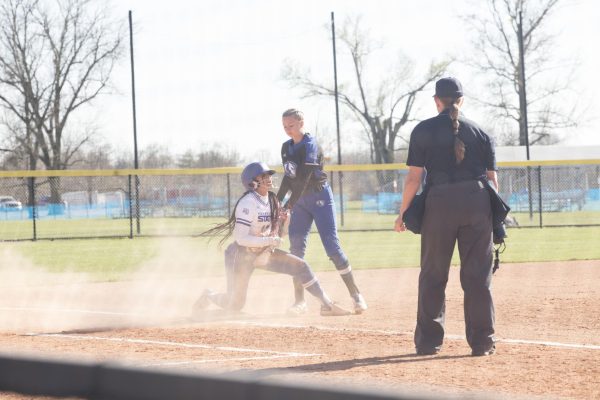Women’s tourney: a snoozer
There have already been some great games in the NCAA tournament this year.
Most of them came from the East Regional. No. 10 seed Georgia Tech nearly upset No. 7 Virginia Tech in a 61-59 loss. No. 12 Old Dominion was one point short of upsetting No. 5 Boston College. And No. 9 Texas Christian came out of nowhere to upset the No. 8 seed Michigan State.
Confused yet?
In the East region of the NCAA tournament, the No. 5 seed was Mississippi State, No. 7 seed was St. Joe’s, the No. 8 seed was California, the No. 9 seed was North Carolina State, the No 10 seed was Auburn and the No. 12 was Butler. But that is the men’s tournament.
In the men’s tournament, upsets are always expected, but this year the number of upsets have gone down from years past. However, the few upsets in the men’s tournament outnumber the one upset on the women’s side.
Judging by the attendance at the women’s tournament games, not too many people would have known which teams were even in the field of 64. Maybe this is a result of the low number of upsets compared to the men’s games.
Texas Christian’s upset over Michigan State was the only upset in the entire first round after Saturday’s games, and a No. 9 upsetting a No. 8 is not exactly shocking.
What would have been shocking was if Ohio Valley Conference Champion Austin Peay could have upset No. 3 North Carolina. And the Governors nearly did!
OVC Player of the Year Brooke Armistead had a chance to tie the game at 72 in the closing moments of the game, but her shot fell just short, ending Austin Peay’s season and 22-game winning streak.
Close games like the one between Austin Peay and North Carolina are the exception rather than the rule in the Women’s NCAA Basketball Tournament.
Of the 24 games played Saturday, 17 games were won by 10 points or more. Nine of those games were won by 20 or more and in two of those games, the margin of victory was greater than the losing team’s score.
Why are there so many blowouts and so few upsets in the women’s version of the NCAA Tournament? Is it because the women’s coaches are meaner and more willing to take it to their opponents than their male counterparts? Probably not. Is it because the people responsible for ranking women’s basketball do a better job than the men’s? Some might contend so, but not likely.
The biggest reason why the NCAA Women’s tournament
features 52-point blowouts (No. 1 Tennessee 95, No. 16 Alabama State 43) is the total lack of balance between the haves and the have-nots.
On the men’s side, small mid-major schools like Creighton and Gonzaga climb up the rankings and prove small schools are just as good as the big schools, but on the women’s side the same three or four teams continue to dominate.
If you don’t play for Connecticut, Tennessee or Duke, you don’t have a chance of winning a national title.
Maybe this is why the crowds at the women’s tournament games look like they couldn’t fill a freshman English class, let alone a 15,000-seat arena.
Maybe when Connecticut and Duke meet in the championship game and the game not be decided by 20 points, some people might show up at the game, but until more teams become competitive with each other, women’s basketball will remain a side show to the men’s circus.











































